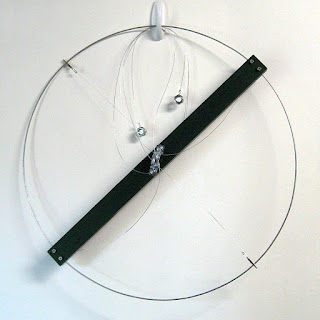The Magic Halo is a hand-crafted device for the sole purpose of deterring House Sparrows (HOSP) from hanging bird feeders. It is hung first on your shepherds hook, then the feeder on a hook within the Halo and its hanging wires. Additional hanging wires can be added. The original Magic Halo was invented and patented by the University of Nebraska. The original study papers can be viewed in PDF format HERE & HERE, and we recommend that potential buyers read this article from FeederWatch first. You can also view this 5 second video showing how it works in concept.
- Before purchasing a Magic Halo, please read our disclaimer and make sure that you are correctly identifying HOSP. Halos over feeders serve as an adult HOSP deterrent. As with anything birds, results can vary. At this time, our survey results indicate that roughly 85% of customers achieve 75-100% efficacy, This appears to make the device quite successful overall.
- Two lengths of hanging wires are offered. 38" should be long enough to ensure that the weighted ends fall several inches below the lowest feeding station(s) on most large sized tube feeders, e.g. Droll Yankees, Brome, etc. If you have an unusually long feeder, select CUSTOM WIRE LENGTH (OPTIONAL) and enter your length. This can be determined by measuring the total length of your feeder (including the hanger) and adding 6". If you are still unsure, email us at: admin@magichalo.org.
Product Description (minus options):
- 20" diameter works for most hanging feeder designs (email us with any questions)
- Finely painted hunter green enamel crossbar (tone may vary)
- 12 AWG (1/8") thick galvanized steel hoop
- 24 AWG clip-on galvanized weighted hanging wires (4)
- Designed for hanging feeders using 1/2" diameter Shepherd hook with 1' reach
- Simply hang between inside hook and bird feeder
- With more targeted feeding, expect fewer refills and thus reduced seed cost
- Price reflects materials cost, ~2 hours labor, and packaging of item
- Easy assembly in a few minutes, requiring only a phillips head screwdriver






